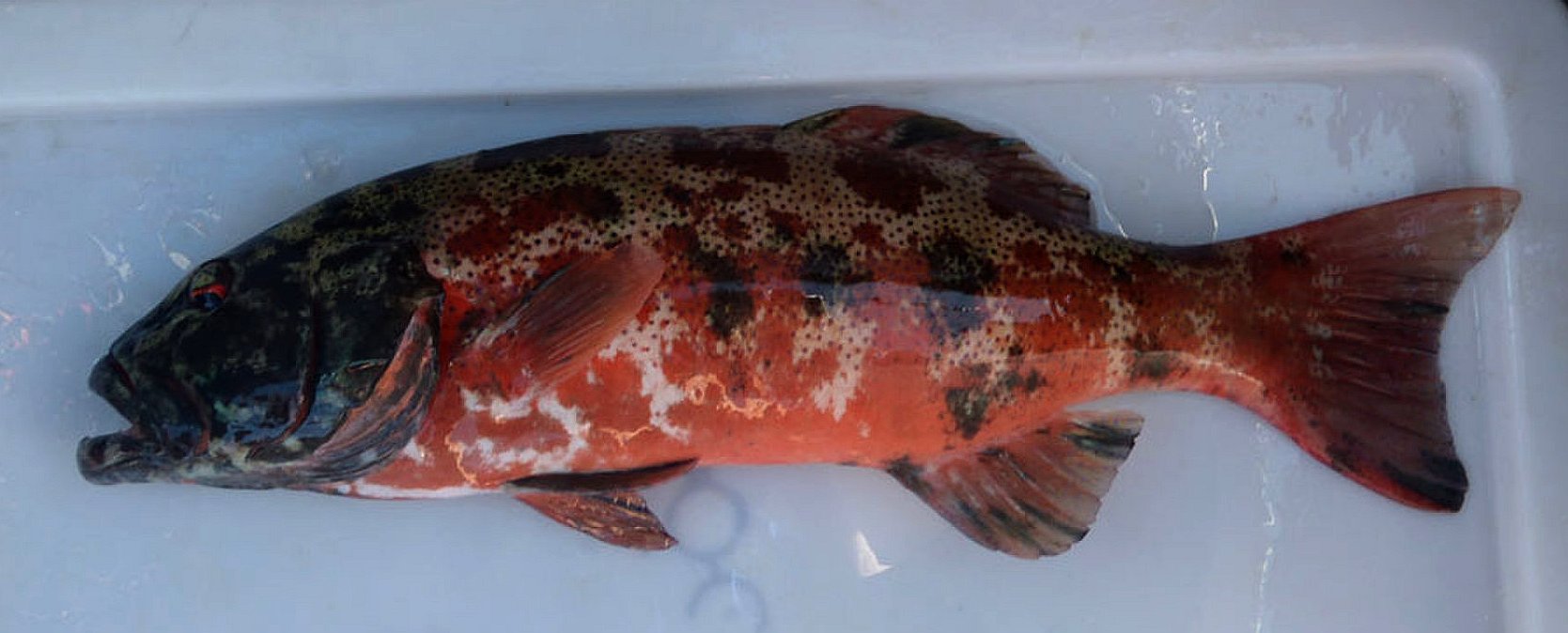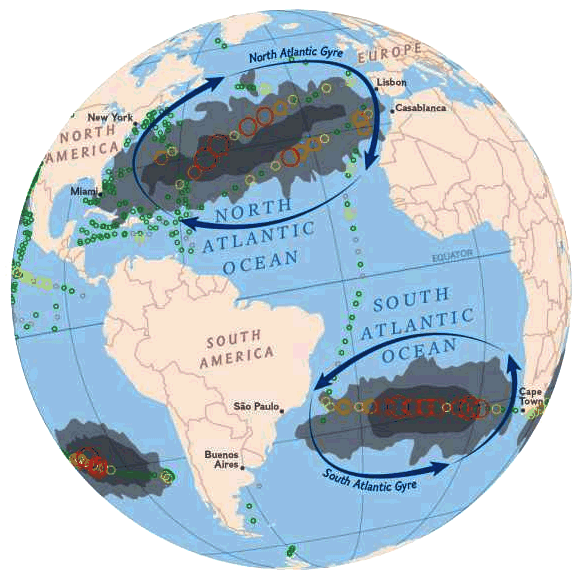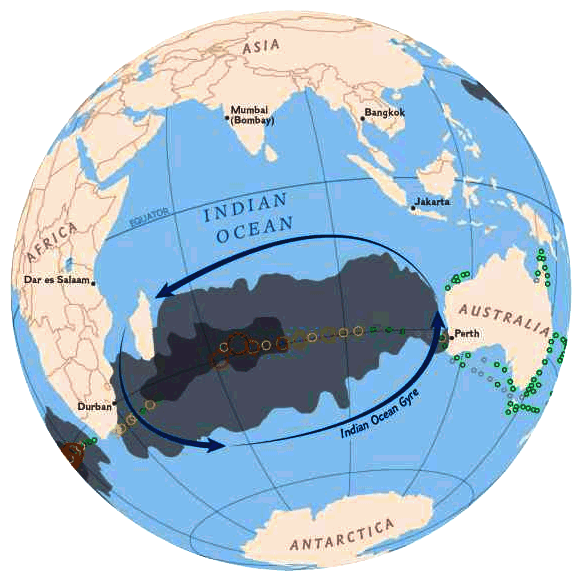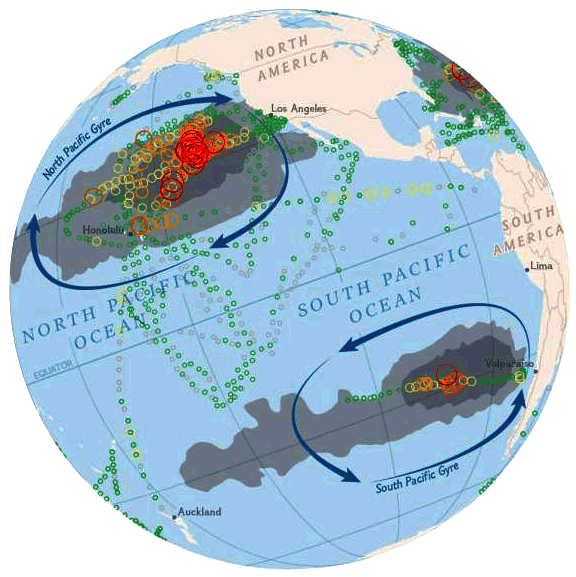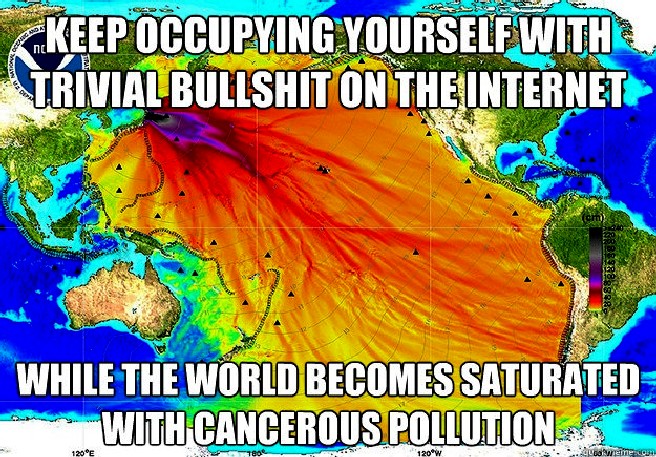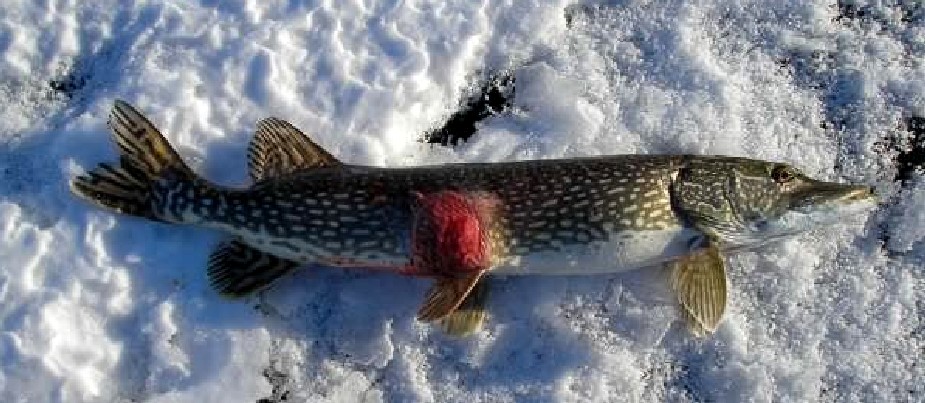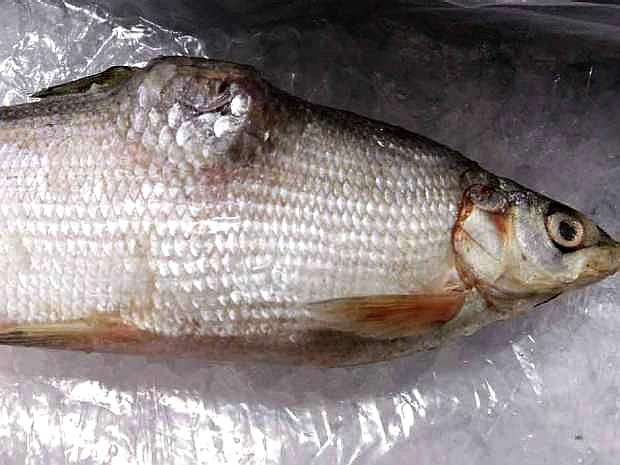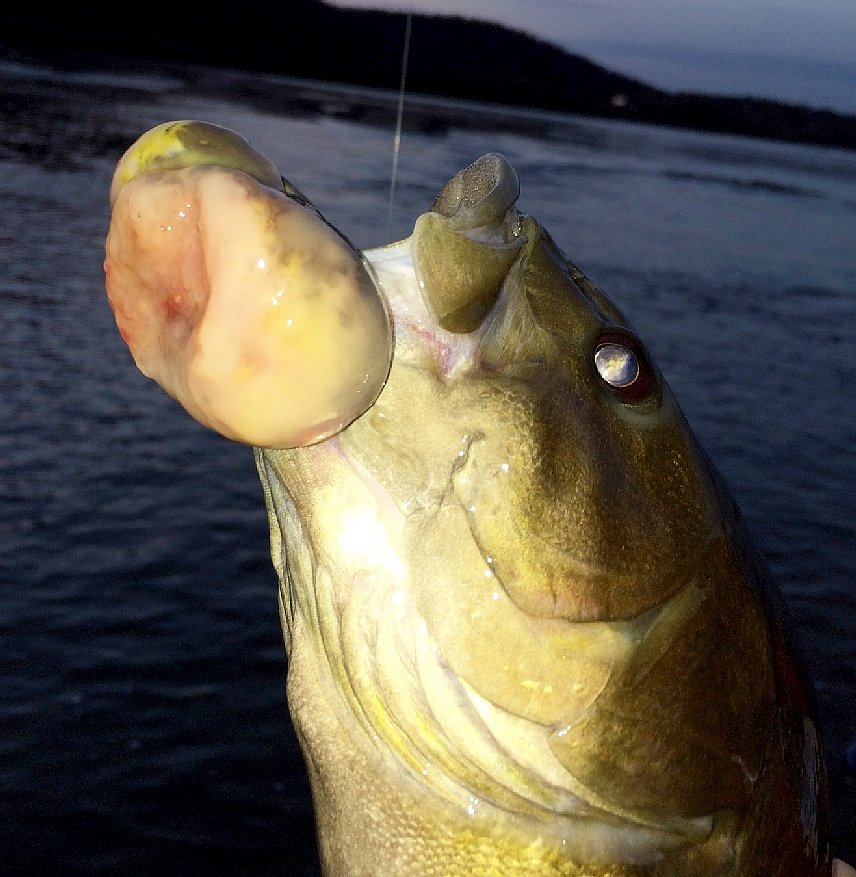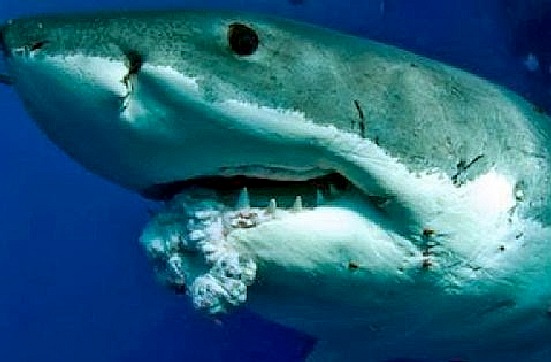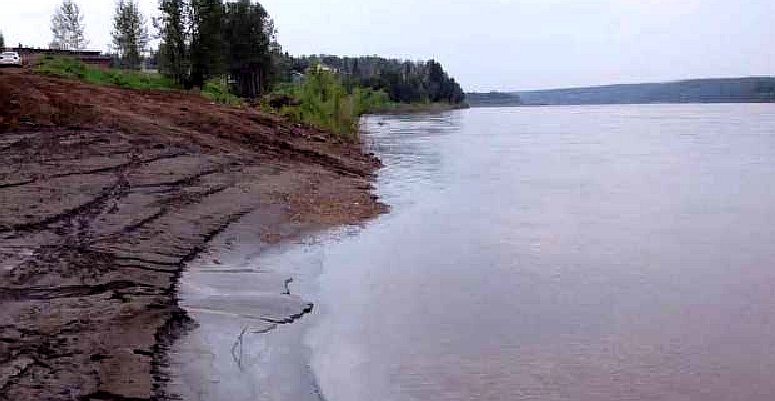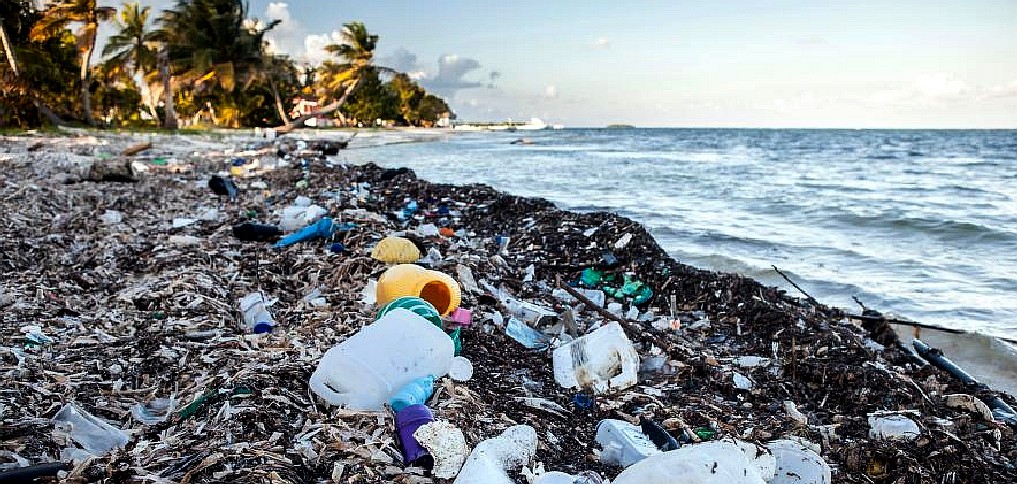|
CANCER & CARCINOGENS
ABOUT - CLIMATE CHANGE - CROWDFUNDING - CONTACTS - DONATE - FOUNDATION - OCEAN CLEANUP - HOME - A-Z INDEX
LIVESCIENCE
AUG 2012 - The first case of skin cancer in a wild marine fish population looks eerily similar to the melanoma that plagues humans, researchers report
1-8-12.
Cancer can be triggered in any animal by exposure to carcinogens in the environment we live in and in the food that is eaten. That is bad enough, but if you are swimming about in an environment that is laden with PCBs and POPs you are sure to be in for a rough ride eventually from the constant bombardment of chemicals.
Plastic in the ocean acts like a sponge soaking up and concentrating carcinogens that is then eaten by marine animals and passed up the food chain to humans. At this time the concentrations in fish are considered by some not to be at harmful levels for humans.
From the mounting body of evidence we have seen we have our doubts and say why would you want to take the chance? You only have one life and so do the animals that you are guardians of and depend on us.
OCEAN
DUMPING
GLOBAL WASTE PROBLEM - The above views of planet earth as global views show us the Atlantic, Indian and Pacific ocean gyres and estimates of plastic waste in (thousands) numbers of pieces of plastic waste per square kilometer of sea. The Pacific Ocean gyres are held to be the worst at the moment. These gyres contain some of the most concentrated carcinogens you are likely to come across in the sea.
SCALE
OF THE PROBLEM
THE GOOD NEWS
The good news if there is such a thing, is that as a charity, the Cleaner Ocean Foundation has come into existence to look into the possibility of reducing the carcinogens that are in our ocean.
A group of engineers and volunteers got together in 2015 to come up with the SeaVax concept, a vessel that is designed to capture plastic in many forms, but especially micro and macro plastics.
Microplastics concentrate carcinogens and trap them like a sponge. If the object of a mission is to remove toxins from seawater, then by removing the small particles of plastic, the carcinogens that have been trapped in the plastic will be removed from the ocean environment, potentially regenerating the marine setting, ultimately to the benefit of all life on earth.
FISH & NUTRITION
Healthy
fish are extremely nutritious and we should do what we can to
keep it that way. Any given serving of fish is packed with protein, and contains B vitamins and minerals including potassium and selenium. One serving (3-ounces) contains from 80 (lean fish like cod) to 150 calories (fattier fish, like salmon).
Unfortunately, almost all fish and shellfish today come with at least some contaminants, accumulated in waters with pollutants and pesticides.
FIDDLING WHILE ROME BURNS - This is not a message from us but another group that was concerned with the Fukushima incident and the cancer in fish that came about as a result. But, one could argue that ignorance of what is happening in our oceans is one of the main reasons why it is happening - why plastic is being dumped in the sea and nobody seems to care.
FISH & CANCERS
Fishes develop tumors and cancers, much like humans and other animals.
Ornamental Koi fishes usually get tumors in the reproductive organs. They will have swollen abdomens and the illness can become terminal. Conversely, goldfish are susceptible to fibroma tumors and sarcoma cancers. While Gypsy-swordtail fishes, generally develop skin cancer (malignant melanoma). Another type of tumor is found in the gills. It causes the fish to be unable to close its gills, and is due to a thyroid dysfunction.
As pets, owners know about these fish issues, as consumers we know very little and expect that fish sold in our supermarkets is healthy. But is it?
The longer a fish lives, the more it will store up and concentrate toxins for humans at the top of the food chain. It is well known that pregnant women should steer clear of sharks and swordfish because of high mercury levels.
CLIMATE CHANGE
Acid oceans, pollution and a hole in the ozone layer above Australia appears to be a recipe for skin cancer in fish.
FISH WITH CANCER - Pollution from nuclear power plants in any shape or size is unthinkable. We must stop using nuclear energy for anything that can harm the marine environment, including nuclear reactors for aircraft carriers and submarines.
NUCLEAR POLLUTION - THE WRITING'S ON THE WALL
In March, 2011 an earthquake off the coast of Japan caused a Tsunami which hit the Fukushima Nuclear Power Plant, causing three reactors to melt down. Not only has that disaster site been spewing 400 tons of highly radioactive water into the Pacific Ocean every day since the earthquake for quite a time. The radiation reached the US West Coast and the fish that were being eaten at that time from the Pacific ocean were disease ridden. The radiation in the fish was so terrible that wild-caught Alaskan Salmon and Canadian white fish were being found to have bloody, cancerous, tumors throughout their bodies.
If the strange lesions and cancerous tumors were only affecting Salmon, one might theorize that a particular disease had struck a particular species. That’s not the case as Alberta Pike are also being caught with grotesque cancerous tumors protruding outside their bodies. If anything the radioactive pollution from Japan shows us that fish are highly susceptible to changes in their environment and that plastic pollution is likely to cause us major problems if we do nothing.
TURNER RADIO NETWORK 28 JANUARY 2014
Americans and Canadians have been eating radioactive fish filled with bloody, cancerous tumors as a result of fish being contaminated with huge amounts of radiation in the Pacific ocean from the Fukushima nuclear disaster in Japan.
According to the Local Environmental Observers (LEO) Network in Hydaburg, Alaska, they have found strange growths in the flesh or meat of salmon. "We were fishing for cohos (silver salmon) at the mouth of the Hydaburg River with line and reel." said Brian Holter, Jr. who said that eight fish were filled up inside with strange growths that were either white or pink in color. "On the outside the fish looked fine. The growths looked kind of like individual little salmon eggs, and about the same size.
There people were seeing the same kind of growths in their fish as well." he continued.
For three years, the Fukushima Nuclear Power Plant disaster has been spewing deadly radioactive material into the Pacific Ocean and for three years, the agencies above have done nothing.
SHARKS WITH CANCER
It was widely believed that sharks did not suffer from cancer. But that myth was put to bed after the Fukushima disaster in 2011. Well, when they swim around the Pacific Ocean in radiation even sharks get cancer. Researchers in Australia noticed a large tumor protruding from the mouth of a great white shark, as well as another mass on the head of a bronze whaler shark. The great white’s tumor measured 1 foot (30 centimeters) long and 1 foot wide, according to a study describing the tumors published online in November in the Journal of Fish Diseases. “This was a very unusual sight as we have never before seen a white shark with tumors,” said Rachel Robbins, a study co-author and shark biologist at the Fox Shark Research Foundation, near Adelaide, in southern Australia. Behold, the first photo in the history of human existence, showing a Great White Shark with a cancerous tumor on its mouth.
LIVESCIENCE DECEMBER 2 2013
Scientists have known for more than 150 years that sharks get cancer. And yet the belief persists that the animals don't suffer from the disease.
FINANCIAL POST 8 JULY 2014 - OIL SAND POLLUTION LINKED TO CANCER
MEDITERRANEAN DIET
If you're eating more fish for dinner, you may be eating less red and processed meats, which increase colorectal cancer risk. Fish is a staple of several dietary patterns also linked to lower cancer risk, such as the Mediterranean diet. People eating a Mediterranean diet are also eating plenty of beans, whole grains, vegetables and other plant foods, which all play a role in reducing cancer risk.
HUMANS AND
ACID DIET
Taking medicines or supplements for cancer while your pH is highly acidic is a bit like washing dishes in a sink of dirty water - even when you put in plenty of soap, you can't get the dishes clean.
Imagine
now that you live in an acid ocean. Imagine that you are a
fish under attack from humans and you can do nothing about it
except be caught and eaten - and pass on all of that
carelessness to the perpetrators of the crime. Polluting our
oceans is a criminal offence under the Marine Pollution Acts (MARPOL).
Reverse aging requires two separate steps: chemical and physical:
1. The first step is to lower the acidity of the body so that it can dispose of acidic wastes in the blood and cellular fluids safely and easily.
2. The second step is to physically pull out old stored wastes into the blood stream so that they can be discharged from the body.
The process is the same for ocean regeneration:
1. Stop putting waste in the ocean.
2. Gradually draw the accumulated waste out of the ocean.
THE INDEPENDENT FEB 2015 - The world’s oceans are being filled with enough plastic waste to thickly line every coastline in the world, according to the first detailed global assessment of the problem. Scientists estimate that about 8 million tons of plastic debris such as food packaging and plastic bottles are being washed into the oceans each year – and the cumulative quantity of waste will result in a tenfold increase in the total amount of plastic in the sea by 2020.
LINKS & REFERENCE
https://www.livescience.com/41655-great-white-shark-cancer.html https://thefishvet.com/2014/07/09/are-you-eating-fukushima-radiation-and-bloody-cancerous-tumors-in-fish-contaminated-by-radiation/ https://www.livescience.com/22042-humanlike-skin-cancer-wild-fish.html http://nesaranews.blogspot.co.uk/2014/03/surprise-youre-eating-fukushima.html http://www.independent.co.uk/news/science/fish-with-skin-cancer-discovered-for-first-time-8001065.html http://www.aicr.org/enews/2015/04-april/enews-fish-and-cancer.html http://www.cancerfightingstrategies.com/ph-and-cancer.html http://www.chimachine4u.com/AA.html http://www.petmd.com/fish/conditions/cancer/c_fi_Cancer_and_Tumors http://news.nationalgeographic.com/news/2015/01/150109-oceans-plastic-sea-trash-science-marine-debris/ http://www.independent.co.uk/environment/plastic-waste-in-ocean-to-increase-tenfold-by-2020-10042613.html https://en.wikipedia.org/wiki/Marine_debris http://britishseafishing.co.uk/microplastics-and-ocean-pollution/ http://wef.ch/plasticseconomy
ABS - BIOMAGNIFICATION - BP DEEPWATER - CANCER - CARRIER BAGS - CLOTHING - COTTON BUDS - DDT - FISHING NETS FUKUSHIMA - HEAVY METALS - MARINE LITTER - MICROBEADS - MICRO PLASTICS - NYLON - OCEAN GYRES - OCEAN WASTE PACKAGING - PCBS - PET - PLASTIC - PLASTICS - POLYCARBONATE - POLYSTYRENE - POLYPROPYLENE - POLYTHENE - POPS PVC - SHOES - SINGLE USE - SOUP - STRAWS - WATER
This website is provided on a free basis as a public information service. copyright © Cleaner Oceans Foundation Ltd (COFL) (Company No: 4674774) 2018. Solar Studios, BN271RF, United Kingdom. COFL is a charity without share capital.
|
